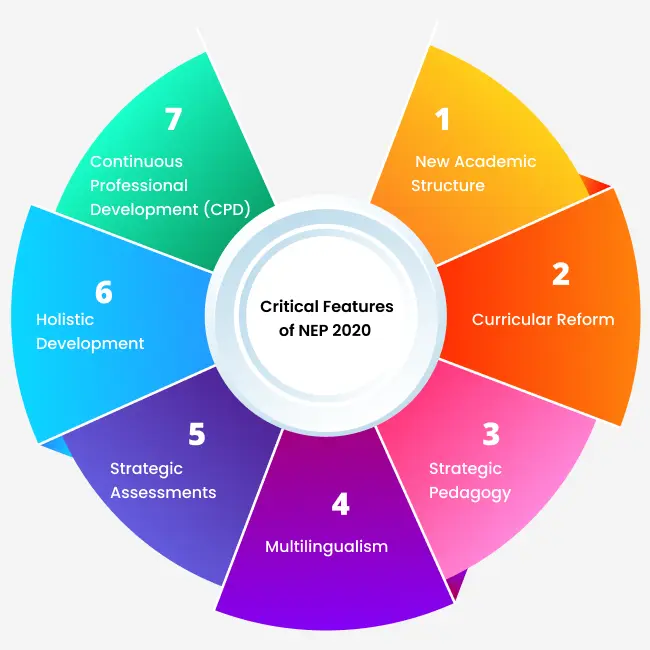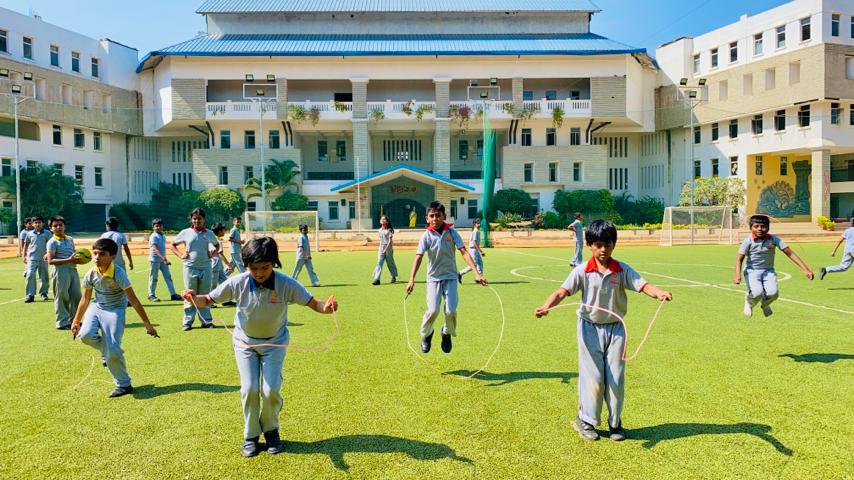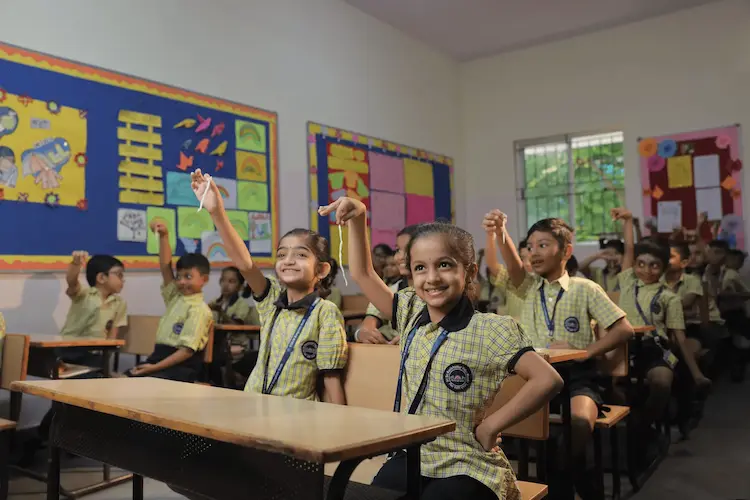How Top Schools in India Are Adapting to NEP 2020 Guidelines

Strong 8k brings an ultra-HD IPTV experience to your living room and your pocket.
Introduction
The National Education Policy (NEP) 2020 has ushered in a transformative era for Indian education. Aimed at overhauling the existing system, NEP 2020 emphasizes holistic, flexible, and multidisciplinary education, aligning with the needs of the 21st century. Top schools in India are at the forefront of this change, implementing innovative strategies to adapt to the new guidelines and set benchmarks for excellence.
Understanding NEP 2020
NEP 2020 envisions an education system rooted in Indian ethos, fostering critical thinking, creativity, and lifelong learning. Key objectives include:
- Foundational Literacy and Numeracy: Ensuring every child achieves proficiency by Grade 3.
- Curricular Integration: Emphasizing arts, sports, and vocational education.
- Multilingualism: Promoting regional languages and mother tongues.
- Technology Integration: Leveraging digital tools for enhanced learning experiences.
Why NEP 2020 Matters for Top Schools in India
Top schools recognize NEP 2020 as an opportunity to:
- Enhance Learning Outcomes: By shifting from rote memorization to conceptual understanding.
- Foster Inclusivity: Through multilingual education and equitable access.
- Promote Skill Development: Integrating vocational training from early grades.
- Encourage Innovation: Adopting new pedagogies and assessment methods.
Profile of Top Schools in India
Leading institutions like The Doon School, Dhirubhai Ambani International School, and The Shri Ram School exemplify excellence through:
- Diverse Curricula: Offering CBSE, ICSE, IB, and Cambridge programs.
- State-of-the-Art Infrastructure: Equipped with modern laboratories, libraries, and sports facilities.
- Global Exposure: Facilitating international exchanges and collaborations.
Structural Changes in Best Schools in India
Adapting to the 5+3+3+4 curricular structure, schools have:
- Revamped Early Education: Emphasizing play-based learning in foundational years.
- Integrated Middle School Programs: Focusing on experiential and inquiry-based learning.
- Redesigned Secondary Education: Offering multidisciplinary subjects and flexible course choices.
Curriculum Overhauls and Multidisciplinary Learning
Curricula now include:
- STEM Integration: Introducing coding, robotics, and AI from early grades.
- Humanities and Arts: Encouraging creativity through music, dance, and visual arts.
- Life Skills Education: Teaching financial literacy, critical thinking, and communication skills.
Teacher Training and Capacity Building
Recognizing teachers as catalysts for change, schools have:
- Professional Development Programs: Regular workshops and certifications.
- Collaborative Learning Communities: Facilitating peer-to-peer knowledge sharing.
- Technology Training: Equipping educators with digital teaching tools.
Revolution in Teaching Methods
Pedagogical shifts include:
- Flipped Classrooms: Encouraging pre-class preparation and in-class application.
- Project-Based Learning: Promoting real-world problem-solving.
- Differentiated Instruction: Catering to diverse learning needs and styles.
Language Policy and Cultural Integration
Aligning with NEP's emphasis on multilingualism:
- Mother Tongue Instruction: Implemented up to Grade 5.
- Second Language Options: Offering regional and foreign languages.
- Cultural Programs: Celebrating India's diverse heritage through festivals and events.
Digital Empowerment & Smart Classrooms
Technological advancements encompass:
- Interactive Whiteboards: Enhancing visual learning.
- Learning Management Systems (LMS): Streamlining content delivery and assessments.
- Virtual Labs: Providing hands-on experiences in science and technology.
Vocational Education from Early Grades
Vocational training initiatives include:
- Skill-Based Modules: Covering carpentry, gardening, and culinary arts.
- Industry Partnerships: Facilitating internships and real-world exposure.
- Career Counseling: Guiding students towards diverse career paths.
Assessment Changes in the Best Schools in India
Assessment reforms focus on:
- Formative Evaluations: Continuous feedback mechanisms.
- Portfolio Assessments: Showcasing student progress over time.
- Competency-Based Testing: Measuring application of knowledge.
Parental Participation
Enhanced engagement strategies involve:
- Regular Communication: Through newsletters and parent-teacher meetings.
- Workshops and Seminars: Educating parents on NEP 2020 and its implications.
- Feedback Mechanisms: Encouraging parental input in school policies.
Infrastructure Revamps
Facility upgrades include:
- Flexible Learning Spaces: Supporting collaborative and individual work.
- Green Campuses: Incorporating sustainability practices.
- Safety Measures: Ensuring secure environments for students.
Inclusive Practices in Best Schools in India
Inclusivity efforts encompass:
- Special Education Programs: Catering to diverse learning needs.
- Scholarship Schemes: Providing financial assistance to underprivileged students.
- Gender Sensitization: Promoting equality and respect.
Global Collaborations and Exchange Programs
International partnerships offer:
- Student Exchange Programs: Fostering cross-cultural understanding.
- Collaborative Projects: Engaging with global peers on shared initiatives.
- Curriculum Benchmarking: Aligning with international education standards.
Challenges in Implementation
Obstacles faced include:
- Resource Constraints: Limited funding for infrastructure and training.
- Resistance to Change: Overcoming traditional mindsets.
- Digital Divide: Ensuring equitable access to technology.
Government and School Collaboration
Collaborative efforts involve:
- Policy Alignment: Ensuring compliance with NEP 2020 guidelines.
- Funding Support: Accessing government grants and schemes.
- Monitoring and Evaluation: Tracking progress and outcomes.
FAQs
How are top schools in India implementing NEP 2020?
By revamping curricula, adopting new teaching methods, and enhancing infrastructure to align with NEP 2020 objectives.
What is the 5+3+3+4 structure introduced in NEP?
It represents the new curricular framework: 5 years of foundational, 3 years of preparatory, 3 years of middle, and 4 years of secondary education.
Are vocational courses mandatory now?
Yes, NEP 2020 mandates the integration of vocational education from Grade 6 onwards.
Do all schools have to follow NEP?
While public schools are required to implement NEP 2020, many private schools are voluntarily adopting its guidelines.
What are the digital tools being used in NEP-compliant schools?
Tools include Learning Management Systems, virtual labs, and interactive digital content.
Will exams still be conducted?
Yes, but with a focus on formative assessments and competency-based evaluations rather than rote memorization.
Conclusion: A New Era for Top Schools in India
NEP 2020 marks a transformative milestone in India’s educational journey, laying the foundation for a more holistic, inclusive, and skill-oriented learning ecosystem. The top schools in India are pioneering this change, adopting innovative approaches that prepare students not just for exams, but for life.
If you’re seeking an institution that embodies the spirit of NEP 2020 through value-based education, modern pedagogy, and holistic development, explore the schools under the Sri Sri Ravishankar Vidya Mandir (SSRVM) network. Visit ssrvm.org to learn more about how these schools are shaping the leaders of tomorrow.
Note: IndiBlogHub features both user-submitted and editorial content. We do not verify third-party contributions. Read our Disclaimer and Privacy Policyfor details.







